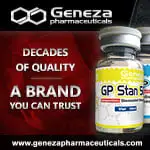@AE1079 Appreciate the respectful reply; you can tell me to fuck off at the end of the day and I’ll still respect the convo. You're absolutely right, individual response matters, and context is everything. We’re all walking petri dishes for these compounds. The nuance you brought up around individualisation is spot on, and I completely agree, that’s what makes coaching more than just data and dosages.
But when we’re discussing compound selection and PED design in public spaces like this where people are observing and applying what they read it’s crucial to ground our discussions in biological plausibility, best practice, and risk-to-reward ratios, not just anecdotal feedback or personal tolerability.
On the DHB vs Anadrol. I get your reasoning behind Anadrol, it’s familiar, it has clinical history, and you’re using it intentionally for fullness and progressive overload. But saying Anadrol is safer than DHB purely because it's studied is a false equivalence.
- Anadrol has documented hepatotoxicity, increases in BP, and fluid retention even at low doses.
- Injectable DHB is not 17aa methylated, doesn’t follow the same liver metabolism, and lacks those risks mechanistically.
- Absence of human RCTs ≠ high risk. And "well-studied" doesn't automatically equal “better,” especially if the known effects are undesirable.
Nobody's saying DHB is risk-free. But we do know enough about its structure, pharmacokinetics, and real-world response to say: it’s not inherently more dangerous than Anadrol. If anything, it often sits between Primo and NPP in terms of side effect profile.
On the Tren @ 70mg I actually really like your logic behind using low-dose Tren for non-genomic effects, glucocorticoid inhibition, nutrient partitioning, aggression, etc. That’s a refreshingly educated take, and it shows deeper understanding than just "Tren = mass." But here’s where I have to ask, does 70mg/week actually produce those effects meaningfully? That’s 10mg/day of Tren Ace, a compound with a short half-life and dose-dependent action. You’re right to say it doesn’t take high doses to see aggression or impact cortisol, but at 70mg/week, you're likely sitting just above HRT-level suppression with limited downstream effect. And I get the arguement on individual responses. It’s not that the logic is bad, it’s that the dose likely isn’t high enough to meaningfully leverage those effects vs. the risks it comes with at that dose.
"Reducing injection volume by using stronger drugs." Also a valid concern, pin volume adds up, especially with Primo or DHB. That’s a practical problem many of us face, and I like that you’re weighing “compound density per mL.” But I would argue here that:
- Stronger ≠ smarter. A small dose of a strong compound like Tren carries disproportionately higher side effects per mg, especially long-term (CNS fatigue, neurosteroid imbalance, etc.).
- Swapping 600mg of Primo for 0.1mL of Tren might reduce oil. But the systemic burden increases significantly for marginal return if you're not pushing it into an effective range.
So yes, oil volume matters, but not more than pharmacological burden or long-term health risk. I find in most cases with larger doses, it is far better to have your syringe preloaded for the weekly dose, then splitting into daily injections using Slin pins.
The Primo + E2 Crash, you mentioned that increasing Primo could “crash your estrogen” while keeping Test steady. That would only happen if your Test dose is already on the low end, or if you're stacking multiple DHT-based compounds.
- Primo is non-aromatizing, but it doesn’t inhibit aromatase directly.
- Adding more Primo doesn’t suppress E2, it just doesn’t contribute to it.
- So unless Test is at a sub-optimal dose, or you’re running Primo + Mast + Tren together, your E2 shouldn't crash from just bumping Primo.
What can happen is that your E2:Androgen ratio shifts, which can cause some "dryness" symptoms that feel like low estrogen, but biochemically, that’s not the same as “crashed.” The reason we use Primo in advanced cycles is because it does not aromatize into estrogen. It does not act as an aromatase inhibitor, nor does it actively suppress the aromatase enzyme expression. In the case (your case if you've experienced this personally), it's likely your test does is too low, so you aren't producing enough aromatizable substrate (test) to generate adequate estrogen. Or it could be from stacking multiple non-aromatzing compounds that a certain someone could be doing by running Primo + Mast + Tren, so the overall androgen load increases significantly, BUT the aromatizable component that is Test stays the same, resulting in an imbalanced E2:Androgen ratio. Or someone's just gone and used an excessive amount of AI.
E2:Androgen Ratio matters more than absolute E2 alone. DHT-based compounds (like Primo, Mast) compete with E2 at the receptor level, or offset the balance of opposing pathways. This creates a perceived drop in estrogenic tone (dry joints, less water retention, mood shifts), but when you check bloodwork? (Estradoil may still be in-range or slightly reduced). So users feel "crashed", but estrogen isn’t technically "crashed"—it’s just outcompeted or imbalanced relative to androgen load.
Unfortunately, we don't have peer-reviewed RCTs on "Primo + Test" stacks in enhanced males. But we do have a mechanistic understanding of non-aromatizing DHT derivatives. Long-term anecdotal data from top-tier coaches (e.g., Joe Jeffery & Matt Strong, Paul Barnett, Team EvilGenius, Physique Collective, Christian Chapman). Thousands of blood panels showing Primo does not suppress E2 directly.
Is it correct to say “adding more Primo doesn’t suppress E2—it just doesn’t contribute to it”? Yes.
Will it crash E2 if Test dose is decent and Primo is added in isolation? Unlikely. You may feel like E2 is lower, but unless Test is very low or other DHTs are involved, true biochemical E2 crash is rare.
Can high androgen load shift the E2:androgen ratio enough to feel like E2 is low? Absolutely. That’s the nuance.
You are absolutely right about the need to individualize PED selection based on genetics, risk tolerance, and personal feedback, fkin spot on. Glucocorticoid inhibition and recomp effects of Tren, yep, well-documented in both anecdote and preclinical data. Avoiding pushing clients onto things they’re uncomfortable with, 100% agree, that’s ethical coaching and any twat that pushes shit onto clients is a deadbeat. And the importance of context in design, stacking, prep phase, goal specificity, all valid my man.
If the principles we both work off are;
- “Use the least risky compound to achieve the maximum outcome”
- “Respect individual variability without abandoning biological rules”
- “Only include what offers a clear benefit in context”
Then we should apply that framework across the board and not just to familiar compounds, but also to ones we’re less comfortable with. No compound is magic. But no compound is immune from scrutiny, either. DHB isn’t exotic anymore, it’s just unfamiliar. And unfamiliar doesn't mean unsafe.
Really appreciate the discussion, man. These are the kinds of conversations that actually progress PED education, rather than just regurgitating locker room gospel.
 and from what guys have posted and what I’ve seen from guys it doesn’t fuck with your numbers as bad as people think.
and from what guys have posted and what I’ve seen from guys it doesn’t fuck with your numbers as bad as people think.


 Please Scroll Down to See Forums Below
Please Scroll Down to See Forums Below 











